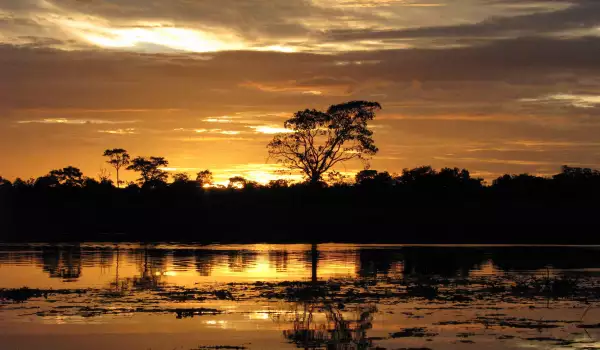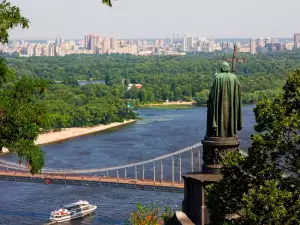Amazon River

Amazon River is fighting for first place as the longest river on the planet with the African Nile. Its width automatically assigns it as the first place but the length of flow of the Amazon lacks slightly. However, scientist and geographers are adamant that it is Amazon that is the longest river in the world.
Along the Amazon is one of the most important transport routes in South America. Amazon is the most deepest river and possesses the widest catchment area. Some officially announced that the exact mileage of Amazon sets it ahead of the Nile in length. The exotic name of the Amazon comes from the language of the local Indian population, and translates literally as "torrent".

Amazon flows through the territories of Peru, Colombia and Brazil. Its length is controversial, as it is considered that it is between 6250 and 6800 km.
The start of this fundamental South American river flow is considered at Karhuasanta which springs from glaciers at 5597 m altitude in the peak of the Andes, Nevado Mismi, in the territory of southern Peru.
This place is situated about 160 km from Titicaca Lake and is about 700 kilometers southeast of the Lima direction. Amazon River flows into the Atlantic Ocean through its vast delta. The width of the mouth reaches about 330 km, making it wider than the length of the Thames River in England.
Amazon River has the largest deposits in the world, following which formed the largest alluvial island on Earth, Marajó.
According to recent studies, Amazon had arisen as a transcontinental river about 11 million years ago. After this researches show that it adopted its current form around a 2.4 million years ago. However, the exact age of the river was unknown.
Exact figures are given because of new biostratigraphic, isotopic and geophysical data obtained from a drilling exploratory drilling in the outer continental shelf and the cone at the mouth of the Amazon. They suggest that the main water transport junction of South America had occurred as a transcontinental waterway between 11.8 - 11.3 million years ago and its current shape and size is acquired during the late Pliocene.
To this day the cone at the mouth of the Amazon, which reaches a length of 10 km for decades is a complex area of research of many scientists. Recent studies are organized with the support of the Brazilian company Petrobras. Allowing the professionals to break the sounding depth of 4.5 km below the seabed, offered the researchers an insight into the history of the Amazon.
In general terms, these scientific works give a better understanding of the paleography of South America and the evolution of the aquatic ecosystems of the Amazon and Atlantic coast.
Another study in recent years found that once, Amazon had been driven by the Atlantic Ocean to the Pacific Ocean back to the current direction. Proof of this is that the sedimentary rocks in the central part of South America contain ancient mineral grains that have come from the eastern part of the continent.
Experts are adamant that 145-65 million years ago, the reverse movement of the Amazon was present. If Amazon was always moving on the east, at the time the sediments would be of very younger mineral grains washed away by the Andes, however, these did not occur.
The entire length of the Amazon age of mineral grains points to certain areas in central and eastern part of the continent. Is believed that the sediments were washed away by the high area which was formed before the Cretaceous period, during which time separates the South American and African tectonic plates.














